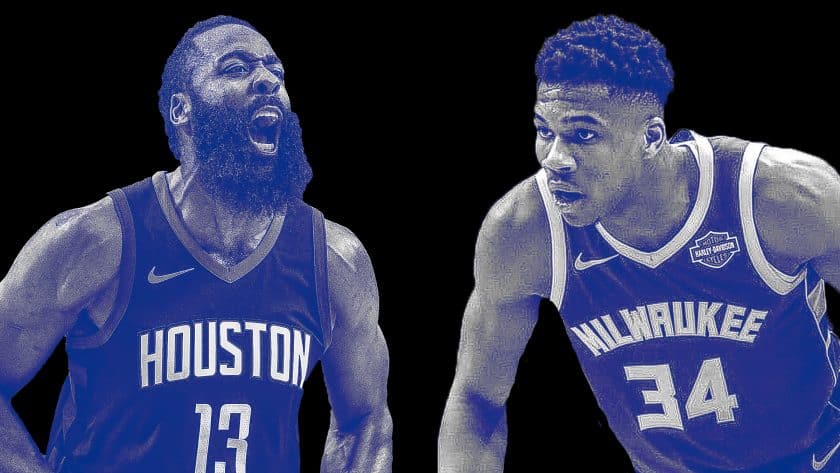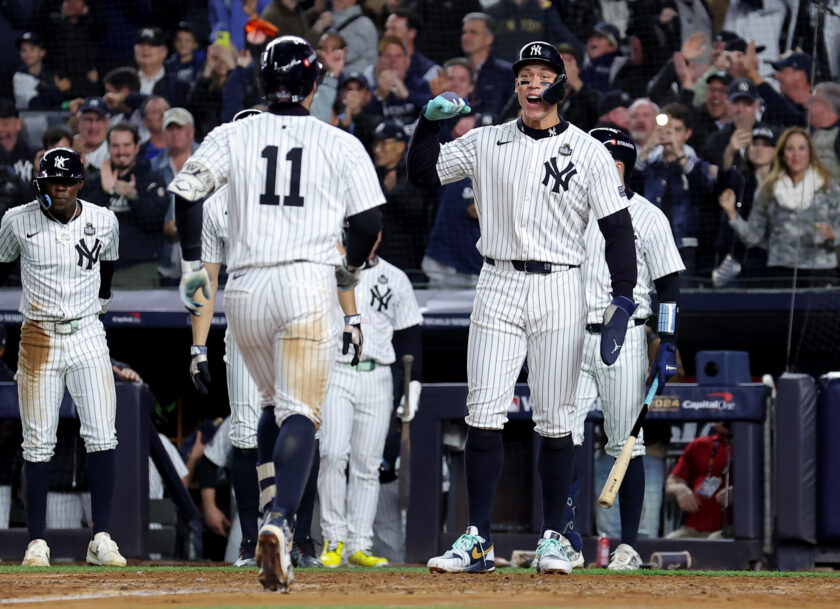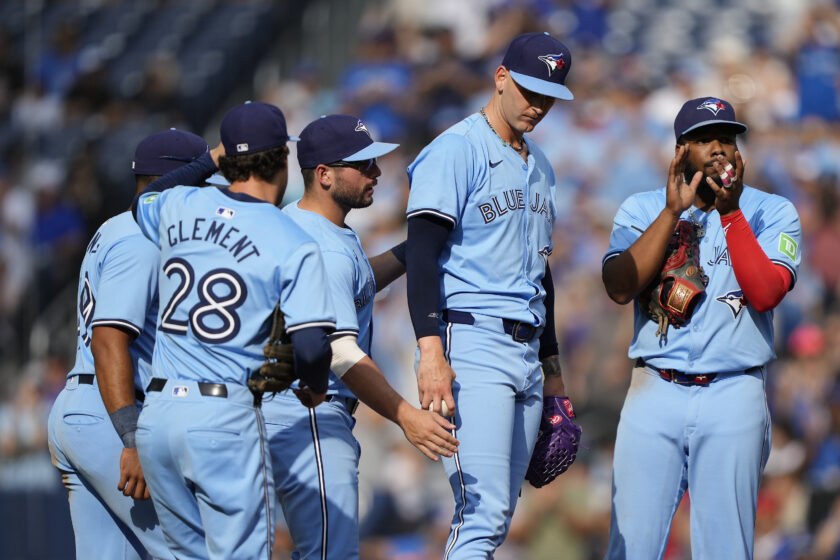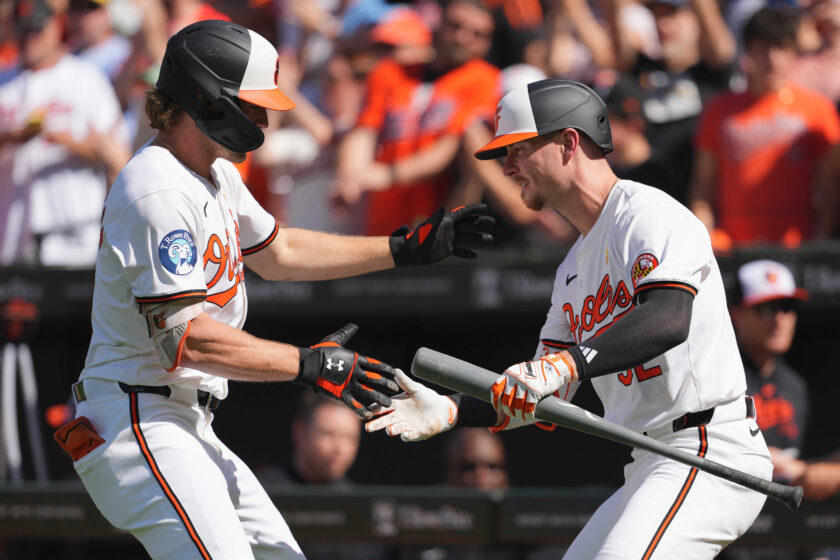The Milwaukee Bucks, Houston Rockets and the perils of system comfortability

Once seen as the next Warriors-like juggernaut, the Milwaukee Bucks may be closer to Golden State’s playoff rival: the Houston Rockets.
[sc name=”Matt Brooks Banner”]Flexibility is a trait found within many championship teams. In 2016, the Cleveland Cavaliers were able to overcome a 3-1 deficit versus the Golden State Warriors. While the loss of Draymond Green in Game 5 certainly waned the Warriors’ explosiveness, the Cavaliers’ adjustments shouldn’t be overlooked.
Former Cavaliers’ coach Ty Lue has become more of a punching bag for jokes than a celebrated Finals-winning coach. And while some of his criticism may be deserved, Lue made two key adjustments during the 2016 NBA Finals. First, he allotted LeBron James the full-time assignment of defending Stephen Curry. And second, he implemented a trap-heavy defensive system near midcourt to get the ball out of the hands of Curry and his Splash Bro Klay Thompson, and into the mitts of non-shooters like Andre Iguodala and the aforementioned Green.
The improvisations worked, and the 2016 Cavaliers are recognized as one of the NBA’s best underdog stories.
Since that fruitful 2016 season, the landscape of the NBA has changed dramatically. Kevin Durant joined the Warriors to form the greatest four-headed monster the league has ever seen. The presence of the Golden State giant has, oddly enough, allowed analytics to bloom at unforeseen heights. Beating the Warriors at their own game is impossible; no other team has this many All-Star talents who fit together as seamlessly as Golden State.
Instead, the bravest competitors have elected to challenge Golden State with a different strategy: mathematics.
Last season, the Houston Rockets took the league by storm, finishing first in the Western Conference standings with 65 wins (ahead of Golden State). With a roster constructed around the isolation greatness of Chris Paul and James Harden, the 2018 Rockets were Morey-Ball’s official introduction to the grand stage. Over the course of the regular season, the Rockets averaged the most threes per game in history (42.3 3PA), and it was clear that Houston was gearing up to win it all through sheer math.
You know how this story ends. Houston met up with Golden State in the Western Conference Finals and for five games, the Rockets’ three-point-heavy system actually worked against the seemingly unconquerable Warriors. Unfortunately, that three-point barrage dried up at the worst time: in Game 7, Houston missed an infamous 27 straight threes. The Rockets were held captive by their system, and Golden State coasted to their fourth straight Finals appearance.
This season was supposed to be different. After a failed Carmelo Anthony experiment, Daryl Morey worked his magic and tinkered with Houston’s roster. The tinkering ultimately paid dividends, and Houston trampled the league en route to one of the best second-half records.
[sc name=”NBA Center”]Round 2 of the 2019 playoffs offered Houston the perfect redemption story. Matched up with Golden State, the series yielded an even face-off through 4 games. Then, in Game 5, the tides changed for Houston. Kevin Durant, the Warriors’ best player, came down hobbling after a jump shot near the right baseline.
“This was it,” fans thought. “This could be Houston’s moment.”
With Durant out of the picture, the Warriors were suddenly stripped of depth. All Houston had to do was run Golden State off the court.
That didn’t happen. For the second straight season, Mike D’Antoni stuck diligently to his virtues. In Games 5 and 6, Houston did more of the same – slowly pushing the ball up the floor, isolating on nearly every possession, hunting for fouls ad nauseam, and launching 80 total three-pointers over the course of two games.
Houston’s predictable offense allowed the Warriors to conserve energy on defense. A suddenly refreshed Klay Thompson and Stephen Curry bludgeoned Houston to death with red-hot scoring. Houston lost because they had learned nothing from 2018.

In the Eastern Conference Finals, we undergoing a similar story. Currently, the Toronto Raptors are up 3-2 against the 60-win Milwaukee Bucks after a shocking road victory in Game 5. Raptors’ rookie head coach, Nick Nurse, has done an astounding job and has made a few key alterations throughout the series. Most namely: he released Kawhi Leonard on poor Giannis Antetokounmpo.
The Bucks, on the other hand, have been weirdly static.
Milwaukee’s rise this year is reminiscent of Houston’s breakout 2018 season. In the offseason, Milwaukee switched out Joe Prunty for one of the best coaches in the league, Mike Budenholzer. The change in personnel made a dramatic impact on the team; Milwaukee cruised to the top seed in the Eastern Conference.
Although Coach Bud has influenced a few areas of Milwaukee’s offense (i.e. empowering Khris Middleton to swap out his trademarked long-twos for three-pointers), his impact has mostly been felt on the defensive end of the floor.
Milwaukee’s defense is predicated upon preventing at-rim shots. This season, opponents shot just 58 percent in the restricted area against Milwaukee’s defense. Bud’s defensive strategy was a successful one, as the Bucks allowed a league-best 104.9 points per 100 possessions.
The Bucks brought that same energy against Toronto. Through five games, Toronto has averaged just 21.2 at-rim shots per game. Instead, the Raptors have been pushed and prodded into taking 29 above the break three-pointers per game: an astounding number for a shot that is seen as statistically inefficient.
Here’s the problem: the Raptors are shooting 37.9 percent on these above the break shots. While this may seem impossible against such an elite defense, the play below is an excellent explanation for why Toronto is scorching the nets with this level of efficiency.

With 10 seconds remaining on the shot clock, Toronto’s Serge Ibaka kicks the ball out to Game 4 hero, Norman Powell. Powell, running with a full head of steam, pierces his way into the middle of the floor. The Bucks’ Ersan Ilyasova and Pat Connaughton converge onto Powell like they had all season, limiting his prospects near the rim.
Unfortunately for Milwaukee, the Bucks’ young forward, Sterling Brown, also steps toward the driving Powell, leaving the scorching hot Fred VanVleet open for three. Powell makes the correct pass, lofting the ball over Brown’s outstretched arms and into the hands of VanVleet, who cuts the Bucks’ lead to just 2 points.
Brown’s unnecessary help was by no means an accident. The Bucks are hardwired to protect the paint at all costs. By stepping towards Powell, Sterling Brown was just acting within the system.
Here’s another example from Game 5. This time, it’s Kyle Lowry who has the ball. Lowry begins the possession by isolating against Nikola Mirotic. After crossing-over the jarringly unplayable “Threekola,” Lowry attacks the basket with vigor.

There he is met by a sea of defenders: Ersan Ilyasova, who correctly slides over to protect the basket; Mirotic, who does his best to get back into the play; and Pat Connaughton, who, by habit, gets sucked into the paint, thereby leaving VanVleet open from three.
Lowry, an excellent passer, makes the Bucks pay for fixating on the at-rim shot. He cooly stops in his tracks, turns his head, and launches a bounce pass to the weak-side, making things easy on his teammate (VanVleet) as he launches a wide-open three-pointer.
What started as a cute tactic to halt the efficiency of a one-legged Kawhi Leonard has quickly become a disease that has infected the Bucks’ once-sterling defense.
Instead of pressuring Toronto’s outside shooters, the Bucks have doubled-down on their regular season strategy, clogging the paint with as many defenders as possible to limit the Raptors’ at-rim proficiency. This problem has only gotten worse and worse as the series has progressed.
Toronto’s roster is stacked full to the brim with top-notch passers. With Milwaukee converging unnecessarily, guys like Kyle Lowry or Marc Gasol have initiated skip passes to open three-point shooters at their heart’s content. 26.7 percent of the Raptors’ three-pointers have been “wide open” according to NBA.com’s tracking statistics. That is a problem, my friends.
Milwaukee’s inflexible defensive strategy is the biggest reason that Toronto’s bench has come alive; previously slumping players like Fred VanVleet and Norman Powell have had all of the time in the world to set up and pop for three. Role players typically make or break an even playoff matchup, and right now, Toronto’s bench is the biggest reason that the Raptors have the series advantage.
What was once the backbone to a top defense has now become a gimmick. The cons of clogging the paint are currently outweighing the pros for Milwaukee. Toronto has taken advantage of Milwaukee’s uncertainty by getting every open three-pointer they could ever want.
Until Milwaukee pressures the Raps from three, Toronto will be the better team. Toronto finished sixth in three-point percentage during the regular season; they’re too good to be left this open.
It’s been clear since Game 3 that Milwaukee’s defensive system isn’t working. Yet, here we are. Nearly one week later, Milwaukee is still clogging the paint with 2-to-3 defenders on nearly every possession and leaving Toronto’s shooters open from deep. The Bucks have, unfortunately, become the NBA’s Beastie Boys: they’re staring down the barrel of the gun.
After their exciting Game 2 victory, the Bucks enjoyed a premature online celebration as the next great NBA juggernaut. Many were proclaiming Milwaukee to be the next Golden State Warriors.
As it stands today, it’s clear that the Bucks may be a closer match to Golden State’s rival — the Houston Rockets — a team the repeatedly fell short due to a lack of adjustments.
Coach Bud and his Bucks have two games remaining to pull things together. It’s time to get out of that comfort zone. It’s time to break the system.
[sc name=”Generic Link Next” link=”https://elitesportsny.com/2019/05/23/new-york-knicks-rumors-kevin-durant-is-100-undecided-on-free-agency-decision/” text=”Kevin Durant Is ‘100% Undecided’ On Free Agency Decision” ]An NBA fanatic who specializes in the advanced analytics of the game. I cover the Brooklyn Nets here in the city. Follow me on Twitter for semi-witty basketball tweets. @MattBrooksNBA






